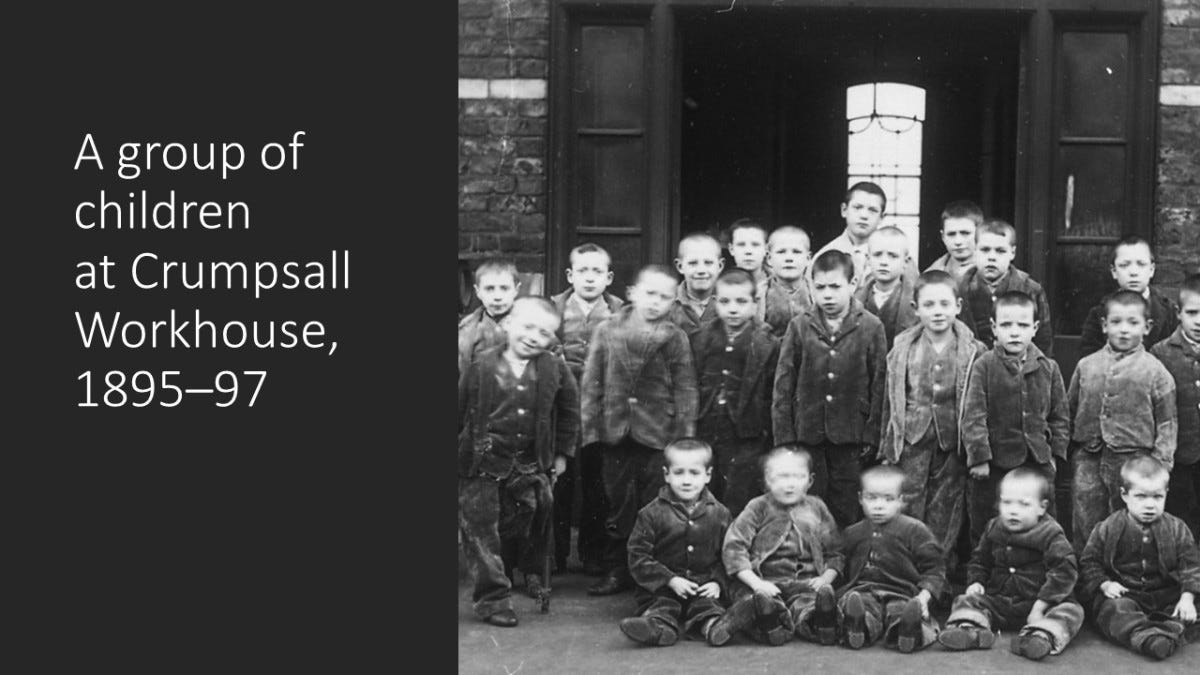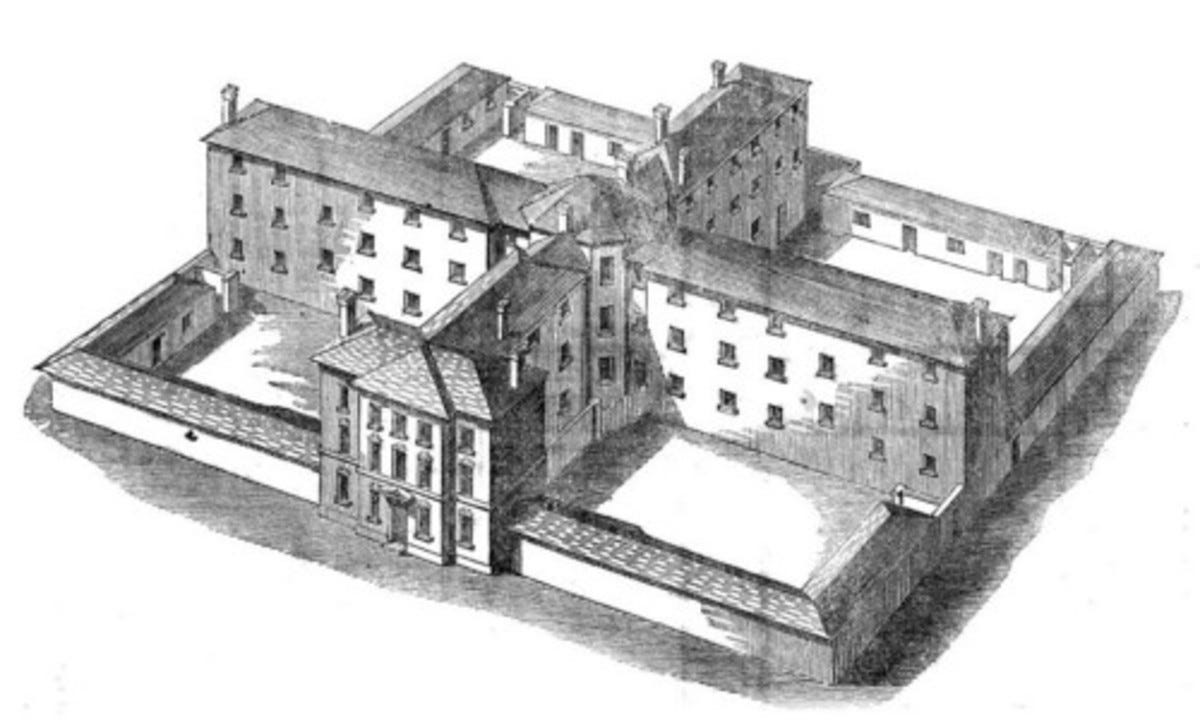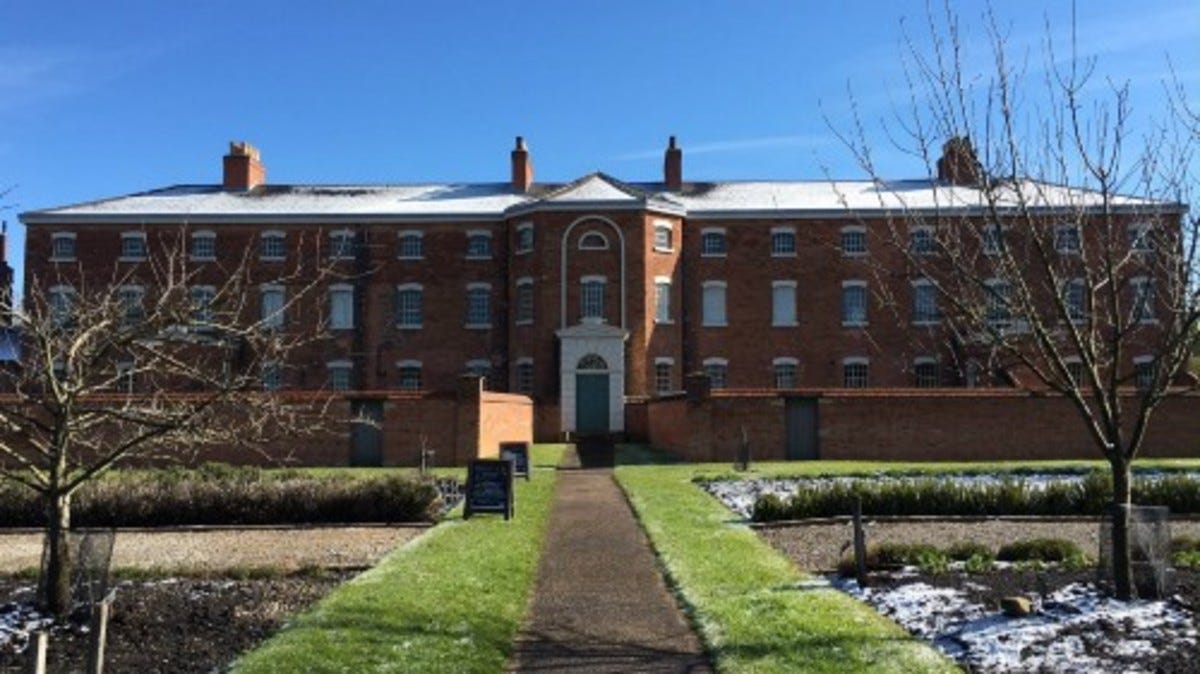The Workhouses: How the Poor Were Virtually Imprisoned in Victorian Era England | by J.C. Scull | Mar, 2022

[ad_1]
Workhouses in Britain have been all-inclusive establishments, which supplied each lodging and a office to these unable to assist themselves. Nonetheless, residing situations have been brutal

 As a transition to a brand new type of manufacturing, wherein hand manufacturing was changed by machines, the Industrial Revolution was a drive to be reckoned with. It was extra of a firestorm than a twister. It began within the massive cities of the UK, slowly shifting by way of the farmlands and rural areas, displacing staff whereas exacerbating the hole between the wealthy and the poor.
As a transition to a brand new type of manufacturing, wherein hand manufacturing was changed by machines, the Industrial Revolution was a drive to be reckoned with. It was extra of a firestorm than a twister. It began within the massive cities of the UK, slowly shifting by way of the farmlands and rural areas, displacing staff whereas exacerbating the hole between the wealthy and the poor.
Nothing may very well be performed about it. No person can cease progress.
The preliminary wave, now often known as the First Industrial Revolution, began round 1760. By 1840, when immediately’s lecturers agree it ended, society had drastically modified. Because the migration to main cities from rural and farm areas reached unprecedented ranges, London’s inhabitants tripled within the interval between 1801 and 1861. Different cities like Manchester, Birmingham and Liverpool additionally grew by three- or four-fold.

As individuals flooded to the cities seeking work at manufacturing, chemical, and iron smelting crops, the ranks of the poor elevated. Britain’s prisons turned overcrowded, prompting the transportation of some 170,000 convicts to penal colonies in Australia between 1788 and 1868. 1000’s of different inmates have been positioned in jail ships (or jail hulks, as they have been referred to as on the time), as conventional jails have been full to capability. A few of these jail vessels would stay at sea close to the coast of the British Isles or hoist on dry land.
Whereas the Industrial Revolution, which started in Nice Britain allowed it to grow to be the world’s main industrial nation, situations at residence didn’t mirror its financial success. By the early 1800s, poverty, social injustice, youngster labor, harsh and soiled residing situations, and lengthy working hours have been prevalent all all through Britain.
As poverty, homelessness, and starvation turned extra prevalent, the British Parliament enacted the Poor Regulation Modification Act of 1834, also called the New Poor Regulation. The modification was a part of a system of poor reduction that had began as early as 1536, finally codified into legislation in England and Wales in the course of the Tutor period between 1587 and 1598. These legal guidelines have been meant to take care of the “impotent poor” in addition to vagrants and beggars.

In 1830, a widespread rebellion named the Swing Riots erupted. Farmworkers in southern and japanese England, protesting agricultural mechanization and harsh working situations, destroyed threshing machines within the Elham Valley space of East Ken. By early December of that 12 months, the rioting had unfold all through all of southern England and East Anglia.
A 12 months later, the 1832 Royal Fee into the Operation of the Poor Legal guidelines was arrange. The fee generated a report coping with inhabitants development and the worry that the practices of the Outdated Poor Regulation have been undermining the place of the unbiased laborer.
Two practices have been of explicit concern, which the Fee report aimed to finish:
- The apply of using “roundsmen”, wherein a parish would pay native farmers and households to make use of the poor at a predetermined wage.
- The Speenhamland system, which sponsored low wages as a strategy to mitigate rural poverty.
The report concluded that the prevailing Poor Legal guidelines undermined the prosperity of the nation by interfering with the pure legal guidelines of provide and demand. It contended that the prevailing technique of poor reduction allowed employers to drive down wages exacerbating poverty. Consequently, the Fee proposed the New Poor Regulation, which expanded the utilization of the now-infamous workhouses, and was based mostly on two overarching ideas:
- Much less eligibility: it supplied that the pauper ought to must enter a workhouse the place situations have been worse than that of the poorest free laborer outdoors of it.
- The workhouse check: the reduction supplied ought to solely be obtainable within the workhouse, and the newly-reformed workhouses have been to be uninviting and providing harsh residing situations. This mirrored the notion that anybody able to coping outdoors of a workhouse would select not to be in a single.
Workhouses in Britain have been all-inclusive establishments, which supplied each lodging and a office to these unable to assist themselves. Though not recognized with that title, related sorts of establishments return to the Ordinance of Laborers of 1349. This program supplied reduction for the poor whereas addressing labor shortages following the Black Loss of life, which killed 60 % of the British inhabitants.
Due to these labor shortages, the motion of staff to different parishes seeking larger paid work turned restricted. This strategy created vagrancy and social dysfunction. As a safety measure, the state elevated its involvement in caring for the poor.
By the sixteenth century, legal guidelines started to distinguish between those that have been genuinely unemployed and the individuals who had no intention of working. Because the church had historically been a significant supply of reduction, the situations the poor and weak have been additional exacerbated by King Henry VIII’s Dissolution of the Monasteries decree in 1536. This, in essence, burdened the state additional with the accountability of offering for the poor.

The earliest recognized utilization of the time period “workhouse” dates again to 1631, when the mayor or Abingdon, within the county of Oxfordshire, reported that “we now have erected with’n our borough a workhouse to set poorer individuals to work”.
By the tip of the 18th century shut to twenty,000 males, girls and kids have been housed within the eighty workhouses in metropolitan London. All different cities had dozens of workhouses sheltering as much as 600 ‘inmates’ every. By the early nineteenth century, workhouses had grow to be the commonest type of reduction to the poor in Nice Britain. In some ways, workhouses turned synonymous with the Victorian period.
Whereas the Victorian workhouses have been supposed to offer work and shelter for the underprivileged, the New Poor Legal guidelines reworked them into prisons detaining probably the most weak in society.
They turned accountable for horrible working and residing situations. Pressured youngster labor, lengthy working hours, malnutrition, beatings and neglect turned frequent occurrences inside their partitions. Finally, workhouses turned a stain within the social consciousness of the time, resulting in opposition from many parliamentarians and social critics, similar to Charles Dickens.
In his basic novel Oliver Twist, Dickens factors to the numerous grim elements of a kid’s life in a workhouse. Dickens tried to show the failings of a system purported to assist paupers however, in actuality, meant to punish them by way of compelled labor and abuse.
The novel’s protagonist, Oliver, is forbidden to obtain a second serving to of meals by an official workhouse regulation established by the parishes of London. By his depiction, Dickens gives an necessary and poignant social commentary that shines a direct gentle on the unacceptable brutality of the period’s workhouses.

In 1846, it was estimated there have been 1.33 million paupers in Britain. Workhouses sheltered 199,000. Roughly 375,000 have been thought-about able-bodied and receiving some type of welfare. The remaining have been disabled, infirm, or very previous. It was estimated that about 6.5% of the British inhabitants could have been accommodated in workhouses at any given time.
Till the early a part of the twentieth century, when workhouses have been abolished and changed into infirmaries and hospitals, they have been bare-bones services designed to make poverty appear much less enticing. The meals in these services was not solely sparse but additionally unpalatable. Inmates slept in crowded and unsanitary situations. They have been put to work crushing stones and grinding bones that will be used as a fertilizer. Most of the girls spun fabric or have been employed out as home staff.
The British authorities, in addition to the wealthy and highly effective, loathed ‘idlers’ or lazy individuals. Victorians basically struggled to grasp and clarify poverty. They have been particularly unable to make up their minds on one query: whether or not the poor confronted situations past their management, or whether or not their positions in society represented considerably of a private selection. Consequently, with the intention to discourage dependency, workhouses have been structured to create situations that have been worse than the bottom normal of unbiased laborers.

Moreover, the Poor Legal guidelines ensured that no able-bodied individual might get poor reduction except they went to stay in a workhouse. Nonetheless, workhouses’ brutal strategy within the remedy of the poor may be mentioned to have created extra social issues than it solved. The directors of those establishments created guidelines and laws that immediately we might take into account not solely ruthless, but additionally unproductive. A few of these have been:
- Males, girls and kids lived and labored in numerous areas: that meant households have been cut up up. Moreover, they may very well be punished in the event that they have been caught talking to one another.
- Youngsters obtained minimal schooling. Oftentimes youngsters wouldn’t be taught fundamentals like studying and writing; abilities they would wish to seek out good jobs later in life, and escape the poverty cycle.
- Inmates have been compelled to put on uniforms. This meant they’d be acknowledged as poor and residing in a workhouse by society as a complete.
- Upon getting into the workhouse, the poor could be stripped and bathed beneath supervision. This was seen as the start of a technique of humiliation that will proceed all through their keep at these establishments.
- The meals was tasteless and there wasn’t a lot of a spread: the identical meal was served on daily basis.
- Inmates would obtain minimal meals rations, inflicting long-term malnutrition.
- All inmates have been compelled to work long and hard hours in onerous, disagreeable jobs.
Surviving the workhouses proved tough, mortality charges have been excessive particularly with sicknesses similar to smallpox, measles, mumps, and different communicative ailments. The contagion was worsened by cramped beds, little room to maneuver round, and little daylight. Manufacturing unit-style manufacturing strains have been unsafe for the kids that have been compelled to work in them. Accidents and even loss of life have been a typical incidence, wherein youngsters have been typically concerned.

In 1905, a Royal Fee established to review poverty and pauperism reported workhouses have been unsuited to take care of the classes of residents they housed. It really useful that specialised establishments for every class of inmates ought to be established, to ensure that them to be handled appropriately by educated workers. It really useful that “deterrent-type” workhouses have been to be reserved for “incorrigibles similar to drunkards, idlers, and tramps.”
In January of 1918, the Native Authorities Committee on the Poor Regulation offered to the Ministry of Reconstruction a report recommending abolition of the workhouses and transferring their duties to different organizations. This led to the Native Authorities Act of 1929 which gave native authorities the facility to take over workhouse infirmaries as municipal hospitals.
The workhouse system was completely abolished within the UK by the identical act on April 1, 1930, though many workhouses renamed Public Help Establishments continued beneath management of county governments. In 1939, on the outbreak of World Struggle Two, near 100,000 individuals resided within the former workhouses. This included 5,629 youngsters.

The 1948 Nationwide Help Act abolished the remaining elements of the Poor Regulation and, with it, the workhouses. Most of the remaining workhouse buildings have been transformed into retirement houses. The Camberwell workhouse, in South London, continued as a homeless shelter till 1985, wherein 1,000 males have been housed. The Southwell Workhouse, was used to offer short-term lodging for moms and kids till the early Nineteen Nineties. It’s immediately a museum.
[ad_2]
Source link